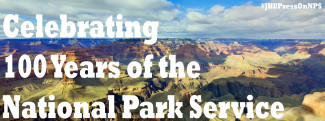
Johns Hopkins UniversityEst. 1876
America’s First Research University
How Many Parks?

We just stopped, and looked. That such a thing existed, and to see it with our own eyes, was enough to make the 2000-mile trip worthwhile. Our first glimpse at a giant sequoia, Sequoiadendron giganteum, left us both speechless. “Wow,” my wife let out in almost a whisper.
Celebrations are being held around the country as the National Park Service celebrates its birth, which happened on August 25, 1916. Some of the parks are much older than the service. America’s earliest conservationists pushed for saving land from development soon after the civil war. The sequoias that fascinated us were protected within a national park 26 years before the Park Service itself was created. By 1916 the growing collection of parks needed a dedicated force to protect and manage the lands. Thus the National Park Service was created.
It’s no coincidence that 1916 was just a few years after the creation of the federal income tax. The U.S. Government was growing and people had aspirations of building a better country, with a more organized, centralized government. Things were on the move. Today battles rage over the role of the of the government, but to stand in front of a sequoia - well it’s hard to see how anyone could question the decision to save it. Without the federal effort, the few specimens that remained, some thousands of years old, probably would have fallen to the lumberjacks.
This morning I thumbed through the Johns Hopkins University Press book, Mammals of the National Parks, and I paused on the Sequoia page. Then I flipped through another 100 or so pages before penning this blog. It’s pretty inspiring to see the beauty of the parks and the mammals saved within them. Whether the role of the federal government is too far-reaching, or not far-reaching enough, I can’t say. We’ve all got a viewpoint, and I don’t think there is a right answer, just opinions. But if you ask me they got it right with parks, and wildlife refuges. Woodlands, wetlands, and wildlife are among our national successes. Not everything has been saved, of course, but a lot was. Our ancestors made that happen. I’m grateful they did.
The 20,000 hard-working employees of the National Park Service are spread across the country, protecting our wilderness lands. They are joined by tens of thousands of other conservation workers hired by the federal government, states, universities, non-profit organizations, and even some timber companies. On this 100th anniversary of the Park Service, I want to pose a few questions: Are there enough paid conservationists? Have we done enough to protect enough nature? How do our efforts compare to our ancestors?
The ecologist Eugene Odum once suggested 50% for nature, 50% for humans would be a workable balance. Currently the U.S. has about 30% set aside for what we might call “nature.” But most of the land is in a few states, and Odum knew you had to protect everywhere. So to truly achieve Odum’s vision, we’d need to turn lots of undeveloped land into parks and refuges and forests in lots of states. Currently, most states have small amounts of land set aside, while a dozen or so are fairly well balanced.
I only have questions, not answers. As we mark the anniversary of the National Park Service and take pride in our country’s parks, I’m wondering where the end might be. Perhaps 50% set aside in every state for nature? I wonder what they’d say about us in 2116 if we began that movement? “Wow,” is a possibility.
Vincent Burke is editor emeritus at Johns Hopkins University Press. Before becoming a book editor in 1999 he was a field biologist and taught ecology courses.

The National Park Service (NPS) celebrates its centennial anniversary in the month of August! NPS has served as a valuable resource for many of our authors, both professionally and recreationally. To commemorate the occasion, our authors have taken to the blog to pay homage to “America’s best idea”! Check back with us throughout the month of August for more #JHUPressOnNPS! (Series photo credit: Wikimedia)


